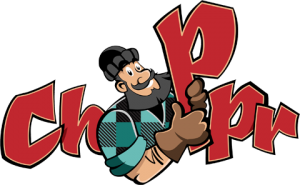on November 7, 2024

The web development industry is constantly evolving, and the future of PSD-to-HTML conversion is no exception. Traditionally, converting Photoshop Design (PSD) files into Hypertext Markup Language (HTML) required manual coding, demanding significant time and expertise. However, advancements in artificial intelligence (AI) are transforming this process, making it faster, more efficient, and highly accurate.
This article explores how AI is revolutionizing PSD-to-HTML conversion, the tools driving this change, and what the future holds for designers and developers.
Understanding PSD-to-HTML Conversion
PSD-to-HTML conversion involves transforming static Photoshop designs into functional HTML code that forms the backbone of websites. This process typically includes:
- Slicing the Design: Breaking the PSD file into individual components like headers, images, and buttons.
- Writing HTML Code: Translating these design components into HTML structure.
- Styling with CSS: Adding styles using Cascading Style Sheets (CSS) to match the design specifications.
While manual conversion provides precision, it is time-consuming and prone to human error.
Role of AI in PSD-to-HTML Conversion
AI brings automation and precision to PSD-to-HTML conversion by analyzing design files and generating code directly.
Speed and Efficiency
AI-driven tools can process PSD files in minutes, eliminating the need for manual slicing and coding. This significantly reduces turnaround times for web projects.
Improved Accuracy
AI algorithms ensure that the generated code aligns perfectly with the design, minimizing errors and inconsistencies.
Enhanced Scalability
With AI, developers can manage multiple projects simultaneously, as repetitive tasks are automated.
Accessibility
AI tools democratize web development by enabling non-technical users to create websites from PSD designs without coding expertise.
AI Tools Shaping the Future of PSD-to-HTML
Several AI-powered tools are leading the charge in PSD-to-HTML conversion, providing designers and developers with innovative solutions.
Avocode
Avocode simplifies the PSD-to-HTML process by enabling design handoff and code export directly from PSD files.
- Features:
- Automated code generation for HTML and CSS.
- Cross-platform compatibility for various design file types.
- Collaborative features for teams.
Learn more at Avocode.
Export Kit
Export Kit converts PSD files into HTML, CSS, and JavaScript code in a matter of seconds.
- Features:
- Supports advanced styles and layouts.
- Generates responsive code for mobile devices.
- Integrates with popular development environments.
Explore Export Kit.
Pictory
Pictory uses AI to transform design files into HTML and CSS, focusing on user-friendly workflows.
- Features:
- Intuitive interface for designers.
- Real-time previews of generated code.
- Built-in optimization for faster loading speeds.
Visit Pictory.
Benefits of AI in PSD-to-HTML Conversion
The integration of AI in PSD-to-HTML conversion offers several advantages for designers, developers, and businesses.
Faster Development Cycles
By automating time-intensive tasks, AI reduces the time required to launch websites, enabling faster project completion.
Cost-Effectiveness
AI-driven tools eliminate the need for extensive manual coding, lowering development costs without compromising quality.
Responsive Design Integration
AI tools ensure that the generated HTML and CSS are responsive, adapting seamlessly to different screen sizes and devices.
Consistency and Quality
With machine precision, AI tools deliver consistent and high-quality results, maintaining design integrity across projects.
Challenges and Limitations
While AI is transforming PSD-to-HTML conversion, there are challenges to consider.
Complex Design Interpretations
AI may struggle with highly intricate designs or custom animations, requiring manual intervention to achieve desired results.
Dependency on Tools
Over-reliance on AI tools can limit developers’ coding expertise and flexibility in customizing outputs.
Compatibility Issues
Some AI-generated code may require adjustments to ensure compatibility with specific browsers or frameworks.
Best Practices for Using AI in PSD-to-HTML Conversion
To maximize the benefits of AI, designers and developers should follow these best practices:
Optimize PSD Files
Ensure PSD files are well-organized with labeled layers and grouped components. This makes it easier for AI tools to interpret and process designs accurately.
Review and Refine Code
AI-generated code should always be reviewed and refined to meet project-specific requirements and optimize performance.
Stay Updated on Tools
As AI technology evolves, staying informed about the latest tools and features ensures you leverage the best solutions for your projects.
Combine Manual and Automated Approaches
Use AI tools for repetitive tasks while applying manual coding for complex customizations or unique design elements.
Future Trends in PSD-to-HTML Conversion
The future of PSD-to-HTML conversion is shaped by emerging trends in AI and web development.
AI-Driven Customization
As AI algorithms become more sophisticated, tools will offer greater customization options, enabling developers to fine-tune code for specific frameworks and platforms.
Integration with No-Code Platforms
AI-powered PSD-to-HTML conversion will increasingly integrate with no-code platforms, empowering non-developers to create functional websites effortlessly.
Enhanced Collaboration
Future tools will focus on collaboration, allowing designers, developers, and stakeholders to work together seamlessly in real-time.
Machine Learning Enhancements
Machine learning will enable AI tools to learn from user preferences and past projects, delivering more accurate and personalized outputs over time.
Conclusion
The future of PSD-to-HTML conversion is undeniably exciting, with AI transforming the way designers and developers approach web projects. By automating repetitive tasks, improving accuracy, and enabling scalability, AI-powered tools are making web development more accessible and efficient than ever.
As AI technology continues to evolve, embracing these innovations will be essential for staying competitive in the web development industry. Whether you’re a seasoned developer or a design professional, leveraging AI tools like Avocode and Export Kit can streamline your workflow and help you create high-quality websites with ease.
